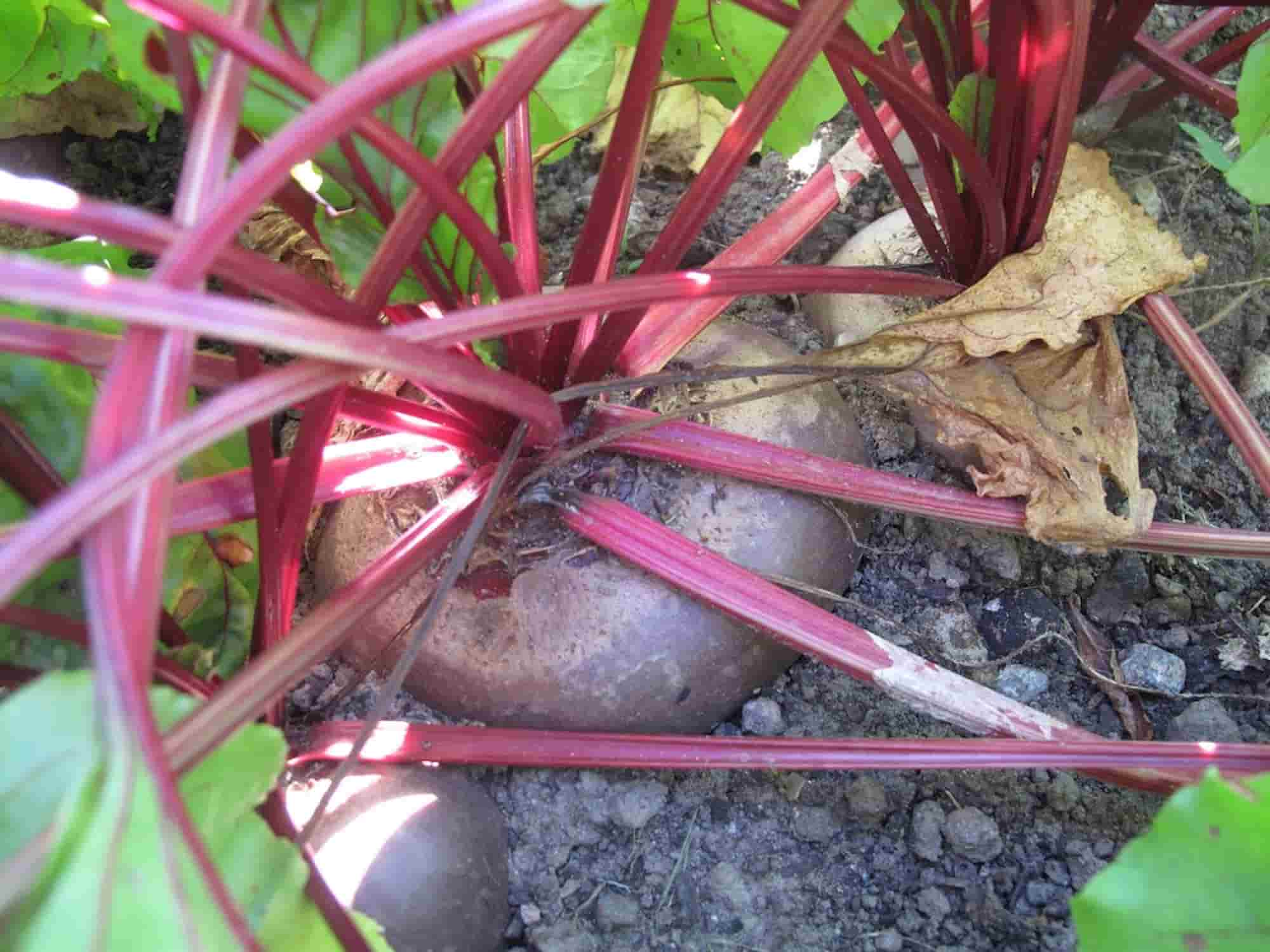
Beetroot: diseases and pests
to better prevent and heal them naturally
Contents
We love the beetroot (Beta vulgaris) for its earthy yet sweet flavour, and its versatility to be enjoyed raw or cooked. Rich in a multitude of colours, shapes, and sizes, it is easy to grow in the vegetable garden, provided it is given deep, well-draining, and light soil. Certainly, it requires sunlight and some watering, but two to four months after sowing, the attentive gardener will harvest beautiful fleshy and colourful roots. Beetroot can be sown from mid-March, possibly under cover, until July for an autumn harvest. Not particularly demanding in terms of growing conditions, beetroot is also notably resistant to diseases and pests, especially when grown in a vegetable garden for family consumption. However, it can be attacked by a few specific pests and infested by diseases, mainly fungal. We will explain how to recognise these beetroot diseases and pests, how to prevent them, and most importantly, how to treat them naturally.
The various foliar diseases of beetroot
It is often at the beginning of summer that these foliar diseases make their appearance. These diseases can have consequences on the harvest, which will be reduced. Hence the importance of quickly identifying them for better treatment.
Powdery Mildew
Description
The agent responsible for this fungal disease is Erysiphe betae. It appears quite late in summer, around July, at a temperature of 20 °C, and is favoured by alternating humid and warm periods.
Symptoms
At first, the leaves of the beetroot become covered with whitish pustules, then a white fluff. They eventually turn yellow and wilt.
Prevention
- Remove affected leaves to stop the spread
- Keep the soil moist during dry periods and apply mulch
- Water while avoiding the foliage
- A horsetail decoction is relatively effective in preventing powdery mildew
Natural Treatments
- Cow’s milk proves effective for treating powdery mildew. Simply spray a solution made with one part milk to one part water twice a week.
- Baking soda is known for its effects on powdery mildew. Use 5 teaspoons of baking soda and 3 tablespoons of liquid black soap for 5 litres of water. Spray once a week.
Rust
Description
This fungal disease is caused by the fungus Uromyces beta. It develops during mild, rainy springs and particularly cool, humid summers.
Symptoms
Orange to reddish-brown pustules appear on the upper and lower sides of the beetroot leaves. Subsequently, a rust-coloured deposit forms. The leaves eventually wilt and dry out.
Prevention
- Water in the morning without wetting the leaves
- Disinfect gardening tools
- Ensure good air circulation by avoiding overcrowding
Natural Treatments
- Remove all affected leaves as soon as the disease appears
- Spray a horsetail decoction every 15 days.
- In case of a more severe attack, spray Bordeaux mixture.
Cercospora Leaf Spot
Description
This disease has been developing significantly in recent years and is starting to appear in home gardens. Beetroot cercospora is caused by the fungus Cercospora beticola. It often appears in June at an average temperature of 20 °C when heat is combined with humidity.
Symptoms
Small round grey spots bordered by a reddish crown appear on the upper side of the leaves. The leaves dry out. The disease then develops on the lower leaves.
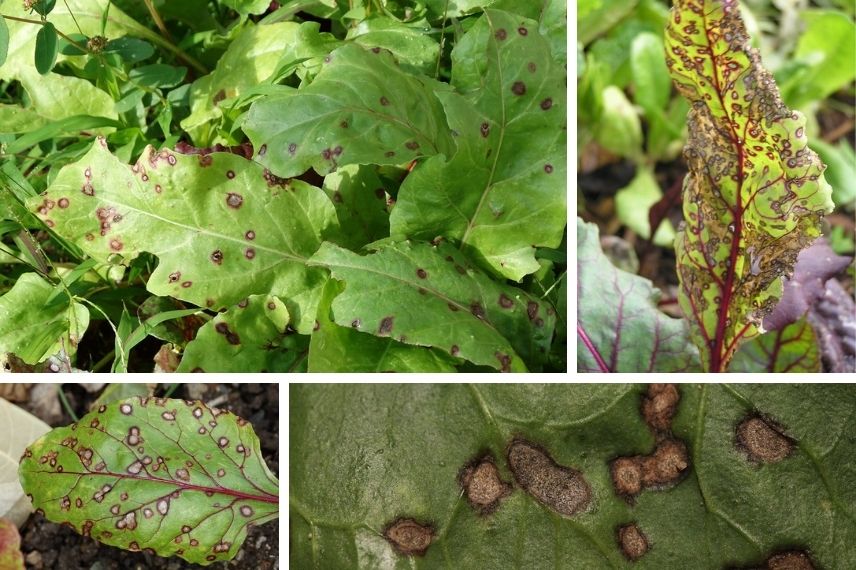 Different stages of cercospora on beetroot
Different stages of cercospora on beetroot
Prevention
- Remove and burn all affected leaves and crop residues
- Grow beetroot in well-drained soil and avoid excess water or fertilisation
Natural Treatment
- Spray Bordeaux mixture or any other product containing 80% micronised sulphur
Beetroot Ramularia
Description
This disease affects the foliage of beetroot caused by the fungus Ramularia beticola. It develops at temperatures starting from 17 °C and can easily be confused with cercospora. It most often appears in July and can survive the winter.
Symptoms
Brownish spots with dark borders appear on the edges of the lamina. They are accompanied by white conidiophores. The spots grow, merge, and cause the leaves to dry out.
Prevention
- Carefully remove crop residues from one year to the next
- Implement longer crop rotations
Natural Treatment
- Spray Bordeaux mixture or another sulphur-based treatment
Pests of Beetroot
Some insects or little critters may also covet the beautiful beetroots in your garden. Whether they are invisible, well-hidden in the soil, or visible, we explain how to recognise and combat them naturally.
The Beetroot Fly
Description
Also known as the beetroot miner, this fly is called Pegomya betae. Tiny and not easily seen, it is the damage it causes that is first noticed. It overwinters in the soil, and the female emerges at the end of April. She lays eggs under the leaves of the beetroot. The larvae hatch about 5 days later and begin their destructive work. Three generations can succeed each summer.
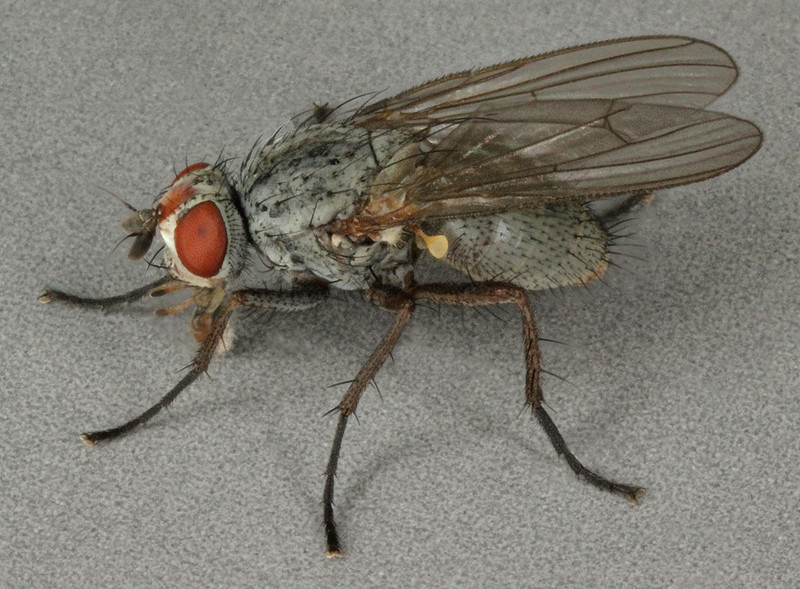
The beetroot fly (Pegomya betae)
Symptoms
The leaves are riddled with tunnels and translucent spots. Upon closer inspection, the larva can be seen inside.
Prevention
- Carefully check the underside of the leaves and remove the eggs
- Implement crop rotation
- Delay sowing until May
Natural Treatments
- Remove all affected leaves to permanently eliminate the larvae that will not become adults
- Spray black soap at the beginning of the season to eliminate the adults
The Green Aphids of Beetroot
Description
The green aphid is a piercing-sucking insect that is a vector for a disease specific to beetroot, the yellowing virus. Myzus persicae is actually the peach aphid that attacks sugar beet fields as well as garden beetroots. It feeds on the sap of the plants and then on the beetroot.
Symptoms
The leaves are curled, and the beetroots show stunted growth.
Prevention
- Encourage the presence of natural predators of aphids such as birds, ladybirds, and lacewings by planting borage or phacelia, and by installing shelters or nesting boxes. Remember that aphids are also beneficial as they feed all these important auxiliaries in a vegetable garden
- Avoid excessive fertilisers that are too rich in nitrogen
Natural Treatments
- Spray the beetroots with water using a jet
- Spray a solution of 15 g of black soap diluted in one litre of water
The Beetroot Atomaire
Description
The beetroot atomaire (Atomaris linearis) is a beetle that attacks the leaves. As an adult, it measures about 1 mm, and the larva is 2.5 mm long. The adult is red. There is only one generation per year. The atomaire dislikes heat, which causes it to stay in the soil. Only moisture brings it out.
Symptoms
It inflicts bites on the roots or leaves, depending on the weather conditions. Small holes appear, which quickly turn black. The beetroot plant may die.
Prevention
- Eliminate crop residues where the atomaires take refuge to hibernate
- Implement crop rotation
Natural Treatment
There is no effective treatment against the beetroot atomaire.
Discover other Beetroot seeds
View all →Available in 0 sizes
Available in 1 sizes
Available in 1 sizes
Available in 1 sizes
Available in 1 sizes
Available in 1 sizes
Available in 1 sizes
Available in 1 sizes
Available in 1 sizes
- Subscribe!
- Contents
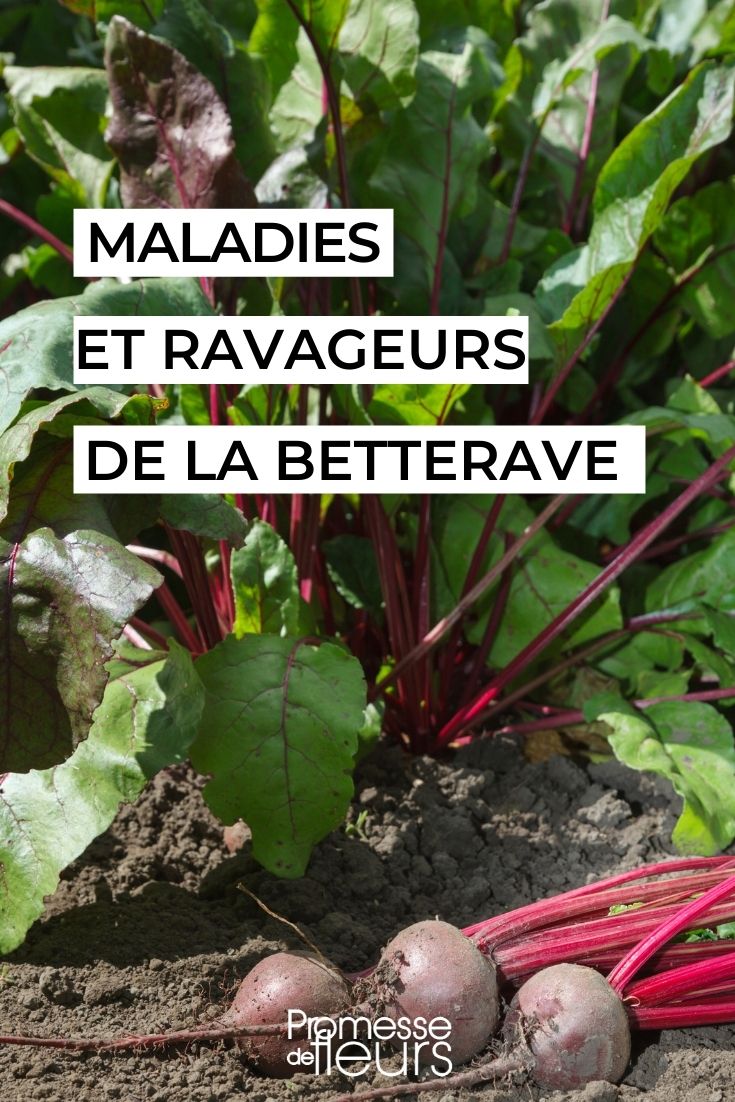




































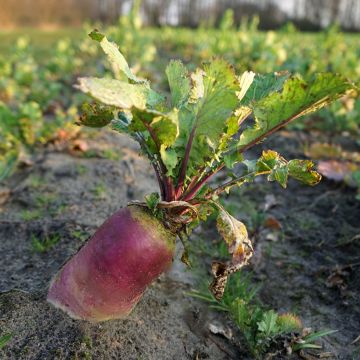

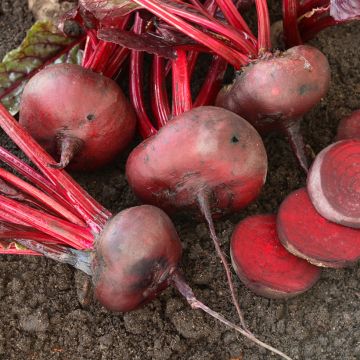


Comments